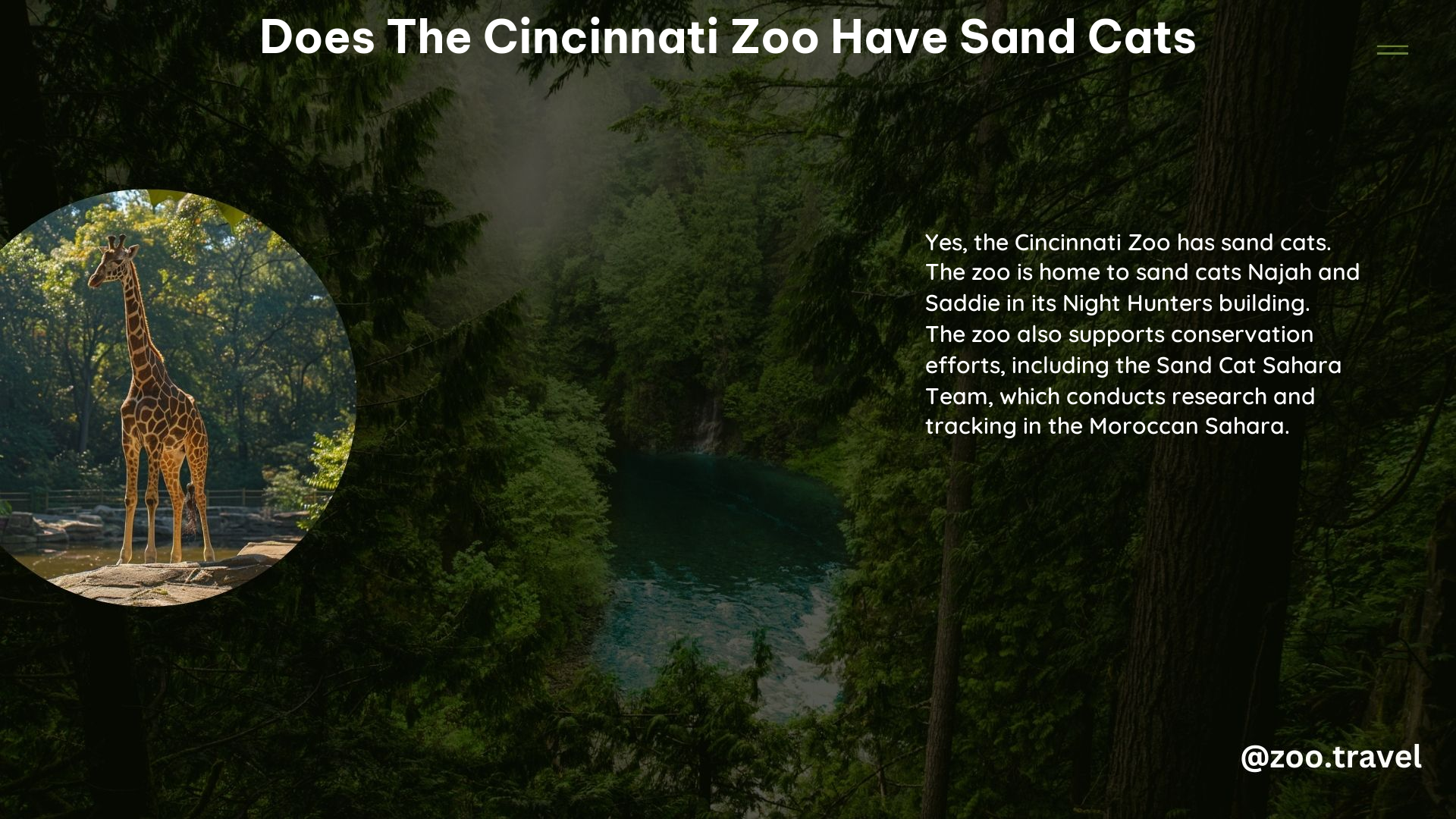Yes, the Cincinnati Zoo does have sand cats. The zoo is actively involved in the conservation and research of sand cats through its Center for Conservation and Research of Endangered Wildlife (CREW) and the Small Cat Signature Project.
Sand Cats at the Cincinnati Zoo
The Cincinnati Zoo is home to two sand cats, Najah and Saddie, which are housed in the Night Hunters building. These cats are part of the zoo’s breeding program and contribute to the understanding and conservation of this species.
Conservation Efforts

The Cincinnati Zoo’s Small Cat Signature Project focuses on improving breeding success and population management in zoos for small cat species, including the sand cat. This project aims to enhance the long-term sustainability of small cat populations in captivity and support their conservation in the wild.
Field Research and Expeditions
In addition to its captive breeding program, the Cincinnati Zoo supports ecological research and conservation efforts in the field. The zoo collaborates with the Sand Cat Sahara Team, which conducts expeditions to the Moroccan Sahara to study the Moroccan Sahara sand cat. These expeditions involve tracking and monitoring the habits and ranges of the sand cats in their natural habitat.
Educational Resources
The Cincinnati Zoo provides various educational resources and opportunities for visitors to learn about sand cats. This includes videos and interactive experiences that showcase the unique characteristics and behaviors of these small feline species.
Sand Cat Facts
- Scientific Name: Felis margarita
- Size: Approximately 20-30 inches long and 2-5 pounds in weight
- Habitat: Deserts and semi-arid regions of North Africa and Central Asia
- Diet: Small rodents, birds, and reptiles
- Behavior: Solitary, nocturnal, and excellent climbers and diggers
- Conservation Status: Least Concern, but populations are threatened by habitat loss and hunting
Why Sand Cats are Important
Sand cats are an important part of the desert ecosystem, playing a crucial role in maintaining the balance of small prey populations. They are also a symbol of the resilience and adaptability of life in the harsh desert environment.
Threats to Sand Cats
Sand cats face several threats, including habitat loss due to human activities, such as oil and gas exploration, overgrazing, and urbanization. They are also vulnerable to hunting and trapping for the pet trade.
How the Cincinnati Zoo Contributes to Sand Cat Conservation
The Cincinnati Zoo’s involvement in sand cat conservation and research is crucial. Through its breeding program, the zoo is working to maintain a healthy and genetically diverse population of sand cats in captivity. The zoo’s support for field research, such as the Sand Cat Sahara Team’s expeditions, also helps to better understand the species’ ecology and inform conservation strategies.
Visiting the Cincinnati Zoo’s Sand Cats
Visitors to the Cincinnati Zoo can see the sand cats in the Night Hunters building, where they can learn about these fascinating felines and the zoo’s conservation efforts. The zoo also offers educational programs and events that highlight the importance of sand cat conservation.
Conclusion
The Cincinnati Zoo’s commitment to sand cat conservation and research is commendable. By maintaining a breeding program, supporting field research, and providing educational resources, the zoo is playing a vital role in the long-term survival of this unique desert-dwelling species.
Reference:
- https://cincinnatizoo.org/conservation/crew/small-cat-signature-project/
- https://cincinnatizoo.org/saving-the-small-yet-mighty-sand-cat/
- https://www.youtube.com/watch?v=-7xQoVWxVUc
- https://www.youtube.com/watch?v=0Sh4tu5Xfhw
